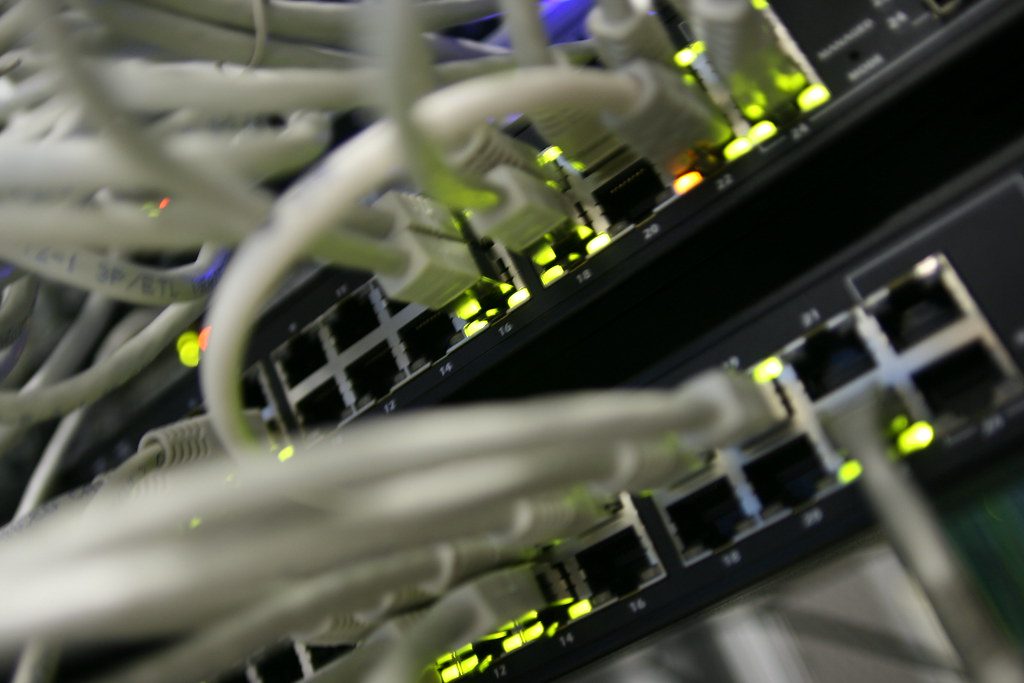Building the Foundation for the Smart Office
When people talk about “smart offices,” they often picture touchscreens, room booking panels, digital signage, sensors, AI dashboards, and seamless user experiences. But none of that matters if the physical foundation of the building is not ready to support it.
This is the layer that determines whether smart technology scales effortlessly — or becomes fragile, expensive, and frustrating.
Layer 8 is where the smart office becomes real — where cables, networks, racks, power, and mechanical systems shape what’s possible (and just as importantly, what isn’t).
Without the right physical environment:
- Devices fail.
- Networks bottleneck.
- Systems don’t talk to each other.
- Energy usage spikes.
- User experience breaks.
With the right foundation:
- Performance is stable.
- Data flows cleanly.
- Spaces adapt to changing needs.
- Technology can evolve over time.
- The workplace becomes intelligently responsive.
Let’s break it down.
Cabling, Networks & Power: The Nervous System of the Smart Office
Every digital system relies on the quality and planning of its physical infrastructure. This includes:
| Component | Purpose | Why It Matters |
|---|---|---|
| Structured Cabling | Connects devices to the network | Determines speed, reliability, & scalability |
| Power & PoE | Powers devices physically and digitally | Enables flexible deployment & lower operating cost |
| Racks & Comms Rooms | The core of building connectivity | Controls thermal performance, serviceability, and uptime |
| Patching & Containment | Manages how devices connect | Impacts maintainability, visual clarity, and fault isolation |
A smart office isn’t defined by screens and apps — it’s defined by the strength of these invisible layers.
Structured Cabling: Build for Now and the Future
A future-ready workplace requires:
- Cat6A or better cabling for 10Gbps speeds
- Shielded cabling in interference-heavy spaces
- 20–30% spare capacity for growth
- Zoned cabling to separate systems like AV, Wi-Fi, security, and lighting
Good cabling is not an expense. It’s an investment.
Every retrofit, expansion, and system upgrade depends on it.
Power & PoE: Smart Power Distribution
Many modern smart devices — sensors, lighting, signage, access control — can be powered via PoE (Power over Ethernet).
This means:
- Less electrician labour
- Faster installation
- Lower cost of infrastructure changes
- Centralised power and monitoring
- More flexibility as the workplace evolves
PoE++ (the newest standard) delivers up to 90W per port — enough to power:
- Smart lighting systems
- Digital displays
- Meeting room scheduling panels
- AI-enabled cameras
- Smart blinds and HVAC micro controls
This is where buildings become responsive to occupancy, daylight, CO₂ levels, energy demand, and more.
Comms Rooms & Racks: The Physical Core
A well-designed comms room has:
- 42U racks with clear airflow
- Proper vertical & horizontal cable management
- Smart PDUs for per-outlet monitoring
- Dual power feeds and UPS backup
- Environmental sensors to protect uptime
A poorly designed comms room has:
- Heat problems
- Tangled cables
- Untraceable faults
- Costly downtime
The difference is design discipline, not cost.
Retrofitting Legacy Buildings: Smart Doesn’t Mean Starting Again
Most organisations won’t be building new offices — they’ll be adapting existing ones.
Common retrofit challenges include:
- Limited cable routes
- No raised floors or suspended ceilings
- Legacy BMS systems that can’t talk to anything else
- Budget or landlord constraints
But smart retrofits are more achievable than ever:
| Constraint | Practical Smart Solution |
|---|---|
| No space for new cabling | Use wireless or battery IoT sensors |
| Legacy HVAC/Lighting systems | Integrate via BACnet/Modbus gateways |
| Limited capital | Use subscription-based as-a-service models |
| Conserved architecture | Use discreet sensor and display mounting |
Smart transformation is rarely about rebuild.
It’s about layering intelligence into what already exists.
Case in Point: A Smart Retrofit Success Story
A tired 1980s office building in Birmingham was facing:
- Outdated lighting
- No structured cabling
- Poor environmental comfort
By introducing:
- PoE smart lighting with occupancy sensors
- Modern AV collaboration rooms
- Mobile desk and room booking
- CO₂ and air quality monitoring
The organisation:
- Reduced energy usage by 30%
- Improved space utilisation through hybrid working
- Repositioned the building as a modern workplace hub
No reconstruction.
Just smart layering with measurable outcomes.
Download the Smart Office Readiness Checklist to see where your organisation stands.
Explore our Foundation and Practitioner Courses to start building capability with the 360 Smarter Stack.

No responses yet